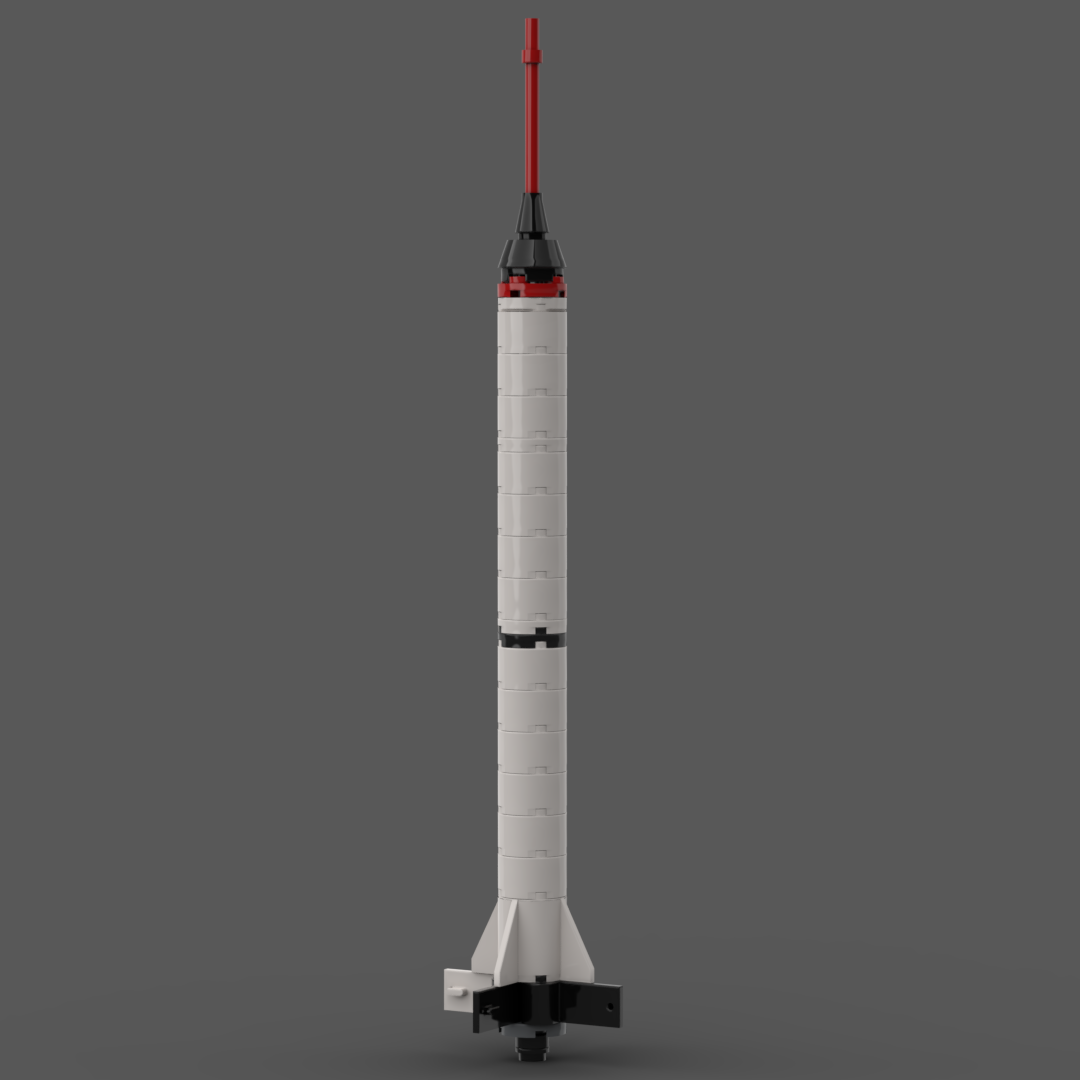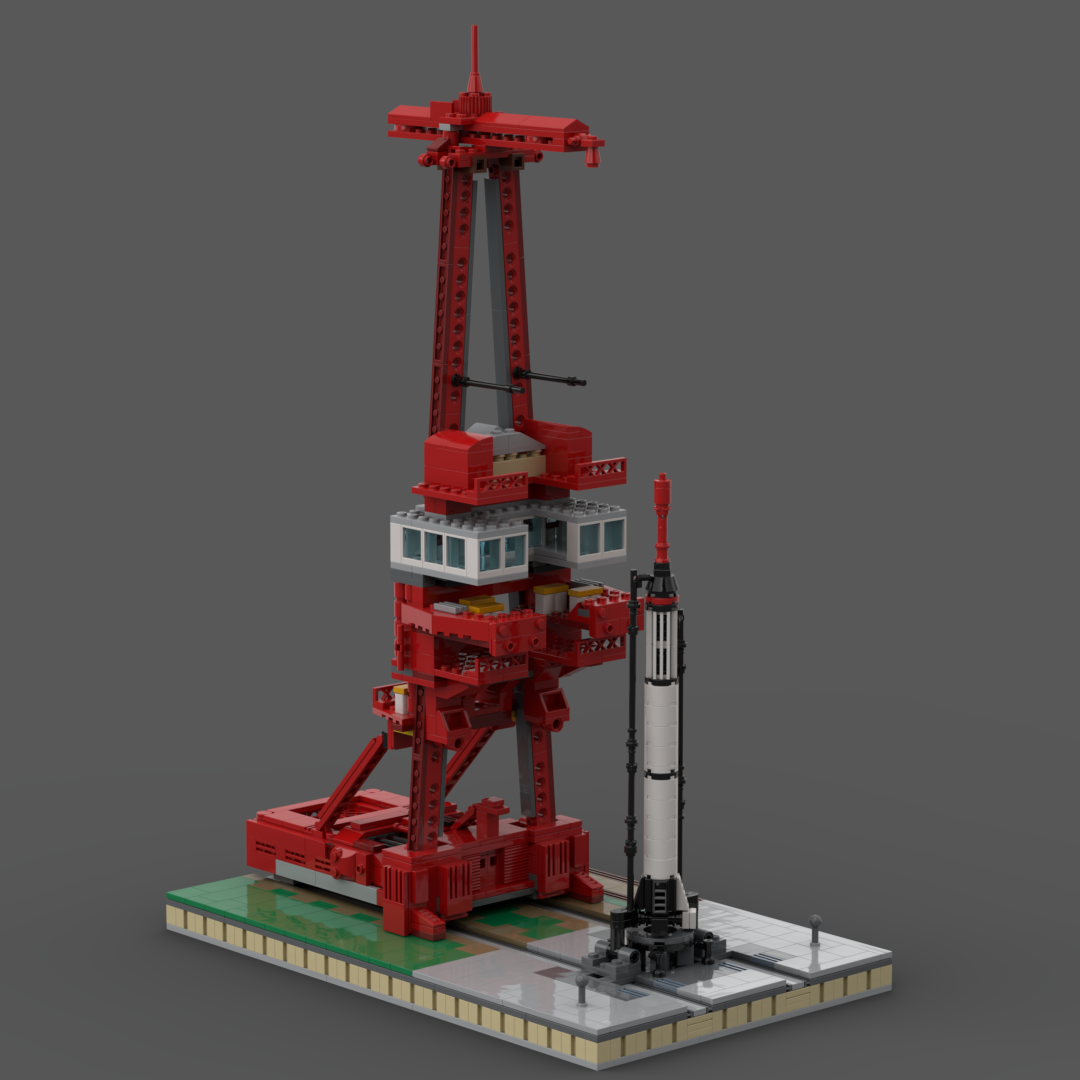
LEGO Designer:
Grant Passmore (Eiffelman)
Designed:
June 2017
Categories:
Manned Spaceflight, All, Space Agency - NASA, Suborbital and Sounding Rockets
Further Information and References:
Wikipedia
Astronautix
NASA : This New Ocean - A History of Project mercury
Launch Vehicle Details
Stages:
1 stage
Length:
20 m
Diameter:
1.78 m
Mass at Launch:
28.4 tonnes
Low Earth Orbit Capacity:
Total Thrust:
357 kN
Apogee:
200 km
Class:
Suborbital, Sounding, Research Rockets and Missiles
The Mercury-Redstone Launch Vehicle, designed for NASA’s Project Mercury, was the first American crewed space booster. It was used for six sub-orbital Mercury flights from 1960–61; culminating with the launch of the first, and 11 weeks later, the second American (and the second and third humans) in space. The four subsequent Mercury human spaceflights used the more powerful Atlas booster to enter low Earth orbit.
A member of the Redstone rocket family, it was derived from the U.S. Army’s Redstone ballistic missile and the first stage of the related Jupiter-C launch vehicle; but to human-rate it, the structure and systems were modified to improve safety and reliability.
Manned launches
- Mercury-Redstone 3 (MR-3) “Freedom 7”
was the first United States human spaceflight, on May 5, 1961, piloted by astronaut Alan Shepard. It was the first crewed flight of Project Mercury. The project had the ultimate objective of putting an astronaut into orbit around the Earth and return him safely. Shepard’s mission was a 15-minute suborbital flight with the primary objective of demonstrating his ability to withstand the high g-forces of launch and atmospheric re-entry. - Mercury-Redstone 4 (MR-4) “Liberty Bell 7”
was the second United States human spaceflight, on July 21, 1961, piloted by astronaut Virgil “Gus” Grissom. The spaceflight lasted 15 minutes 30 seconds, reached an altitude of more than 102.8 nautical miles (190.4 km), and flew 262.5 nautical miles (486.2 km) downrange, landing in the Atlantic Ocean. The flight went as expected until just after splashdown, when the hatch cover, designed to release explosively in the event of an emergency, accidentally blew. Grissom was at risk of drowning, but was recovered safely via a U.S. Navy helicopter. The spacecraft sank into the Atlantic and was not recovered until 1999.
Downloads
Part count: 31 bricks, 15 lots.
| Unit | width | length | height |
|---|---|---|---|
| Studs | 5.8 | 5.8 | 30 |
| Inches | 1.8 | 1.8 | 9.4 |
| Centimetres | 4.6 | 4.6 | 24 |
No: Type Serial Date LS Payload
66 1 Redstone-MRLV MRLV-1 21.11.1960 * F CC LC-5 Mercury MR-1
67 2 Redstone-MRLV MRLV-3 19.12.1960 * CC LC-5 Mercury MR-1A
69 3 Redstone-MRLV MRLV-2 31.01.1961 * CC LC-5 Mercury MR-2
71 4 Redstone-MRLV MRLV-5 24.03.1961 * CC LC-5 Mercury MR-BD
72 5 Redstone-MRLV MRLV-7 05.05.1961 * CC LC-5 Mercury MR-3
76 6 Redstone-MRLV MRLV-8 21.07.1961 * CC LC-5 Mercury MR-4
Failures:
Flight 1: Engine cut off after 1 sec, vehicle fell back to the pad from a
few centimeters height, but did not explode
Launch sites:
CC = Cape Canaveral Air Force Station, Eastern Test Range, Cape Canaveral, Florida, USA
Launch History information from space.skyrocket.de
Launch History information from space.skyrocket.de


